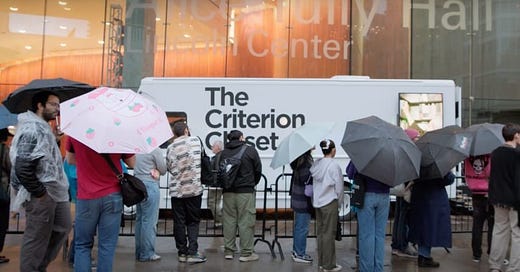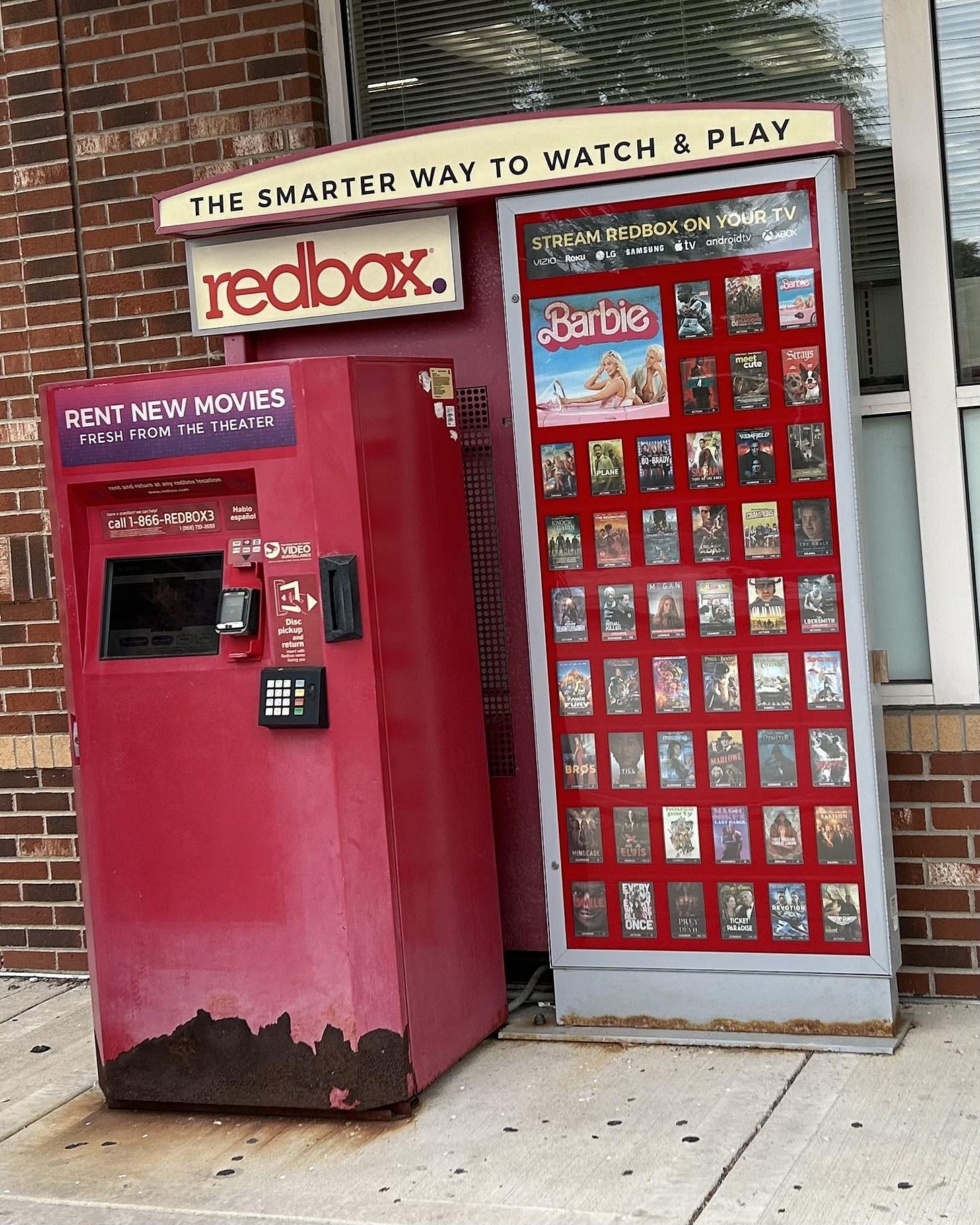Earlier this month at the New York Film Festival, reports surfaced of patrons waiting in line for up to ten hours. The twist is they weren’t there to see a movie. They were waiting to spend a few precious minutes in the mobile Criterion Closet, a traveling version of the home-video distribution company’s famous stockroom that has gone viral in the film community. For several years now, Criterion has published videos of famous filmmakers selecting a few free titles from the closet and explaining-to-camera what makes them great. The mobile closet offered fans a chance to do the same, except the films were available at a steep discount rather than being free of charge. The New York Film Festivals was the first stop for the mobile Criterion Closet, but it won’t be the last. The distributor has hinted that the closet will tour the country, stopping at other film festivals and various film culture hotspots.
You’re probably asking yourself the same question I did when I first heard about this phenomenon: Are these people crazy? They could have watched five movies in the same amount of time they were waiting in line to buy discs they could easily order online. The enthusiasm on display in New York, however, reflects the growing space that physical media occupies in the film landscape. By the numbers, there is little to indicate a revival for DVDs and Blu-rays amidst the streaming revolution. Overall sales of physical media continue to decline. Last year, Best Buy stopped selling DVDs. Redbox just went out of business.
If you spend any time with cinephiles, however, or listen to any film-related podcasts, it’s clear that physical media is having a moment. Criterion Collection may be the most famous distributor of high-end discs, but there are numerous boutique distributors that fill their own niches in the market. Many focus on cult classics or rare films that would otherwise be impossible to find, including Arrow Video or Vinegar Syndrome. If you like B-movie horror, these are the distributors for you. Shout Factory does horror, too, but they also specialize in martial arts films, Studio Ghibli (the iconic Japanese animation studio), and classic TV. When you buy a disc from any of these distributors, you can expect expert-level restorations, plus educational extra features and a booklet essay written by a prominent film critic [Full disclosure: I wrote a booklet for an upcoming Vinegar Syndrome release.]
Those of us who came of age listening to director’s commentaries and watching behind-the-scenes documentaries now find ourselves in a veritable paradise where we await the release of a classic new film with the same excitement that we once anticipated actual new releases. This enthusiasm for physical media is reinforced by strong branding from the distributors and the cultures of fandom that have sprung up around them. Earlier this year, there was a famous episode of The Big Picture, one of the most popular film podcasts, in which host Sean Fennessey and guest Timothy Simons (Jonah from Veep) discussed their growing physical media collections as if it was an expensive addiction. It was like a 12-step meeting where the addicts encourage each other to keep going.
Although movie buffs have been building collections since the days of VHS and Laserdisc, something has changed in the last decade. Podcasts have propelled the art of physical media collecting; hosts, who always need more content, can spend time pontificating on their hobby in between discussing new releases or the Oscar race. Advances in home viewing technology have made pricey Blu-rays an entertainment option worth investing in. And it certainly feels as if the first year of the COVID pandemic, when we were all trapped in our homes, left cinephiles in need of a place to put their energy. When we couldn’t congregate at the movie theater or at festivals, we spent hours on social media talking about what classic film we had taken off the shelf that night. In a stay-at-home era, having a formidable collection is simply a must.
But I suspect the rise in the cultural power of physical media has a more metaphysical cause. The dominance of streaming services has led many cinephiles to be concerned about ephemerality. If a streaming service drops a film, there is no guarantee another will pick it up. A non-profit organization called Missing Movies has even sprung up to save films from the dustbin of history. I’m not sure the risk of losing movies is higher than it was before, but it seems higher when films only exist on a computer somewhere at Netflix or Hulu headquarters. Holding a film in your hands creates a sense of comfort. It’s grounding. It assuages a fear that goes beyond cinema—the idea that, in a digital age, nothing really exists, not like it did before. When you own a movie on disc, it cannot be taken away from you.
We imagine our collections as a return to childhood, when our grubby little hands would clutch a VHS tape like we were Indiana Jones grasping a sacred artifact. Video stores gave us the illusion of permanence, but it was never more than a good show. We worshiped Blockbuster videos as if they were repositories of filmred history, but they actually represented a tiny minority of cinema’s overall output, and their choices were designed to appeal to the broadest possible audience, meaning that classic films and filmmakers of color were often boxed out. [When I profiled MIssing Movies a few years ago, I wrote about this pattern.] Now in these seemingly endless digital corridors, we expect that every film ever made should be available forever. But that’s not how cinema—or life—has ever worked.
It doesn’t take the Dalai Lama to point out that materialism is not a path to happiness. Many of us forget that before the 1980s, films that ran their course in theaters were rarely seen again. Only a small percentage of movies were ever re-released in cinemas or run on television. The Library of Congress didn’t begin preserving films until 1988. Before then, it was up to the studios to determine which movies survived and which were destroyed. Not all of it was intentional; poor storage and the occasional studio fire destroyed a great many works. This scenario required us to accept the ephemerality of art and, perhaps by extension, of life itself. I didn’t live through that era; I was born in 1980, three years after the first video store opened. But I like to think we were happier then, when we stood in line for actual movies—not to stand in a closet—and we did it for a very simple reason: we never knew when we’d get a chance to see it again.





My physical media habits involve books and records only. My DVD player is collecting dust in the basement. If i didn’t have a small Brooklyn house, my dream would be an epic home entertainment system. Then id be a blu ray collecting machine. So instead i channel that energy — and money — into vinyl.
So thought provoking and kind of tears at my heart -- that life long struggle between holding on and letting go exists in the world of film, too.